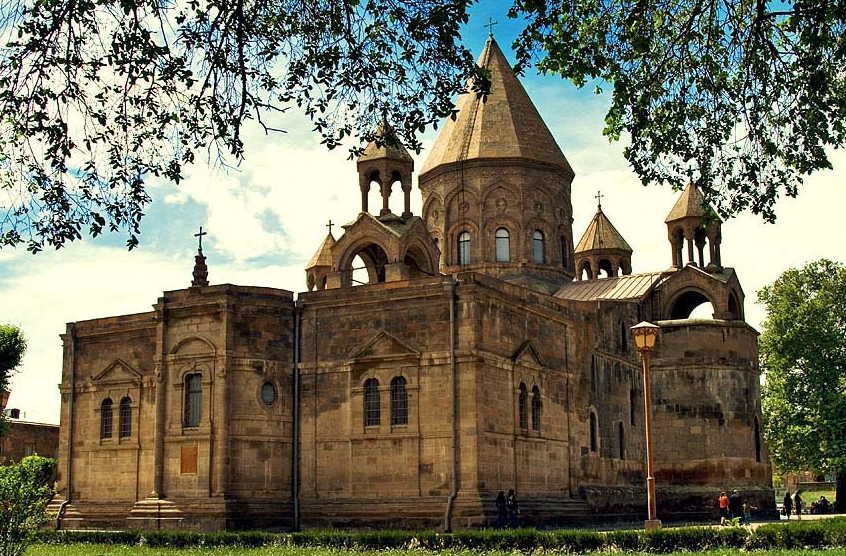Ejmiatsin is known as a “holy city” and Armenia’s “spiritual capital”. It is where Ejmiatsin Cathedral is located. According to the tradition, the first church was built in the 4th century by King Trdat III and Saint Gregory the Illuminator, who, as the legend says, saw in his dream that Jesus Crist descended and showed the sport for the church to be built. The church was built over a pagan temple. Its construction symbolized the conversion of Armenians from paganism to Christianity, as Armenia was the first country in the world to adopt Christianity as a state religion in 301.
 During the Persian invasion, the original church was severely damaged and in 483, Vahan Mamikonian reconstructed it. More reconstruction work and expansion took place in 600s and 1700s. In 2000, Etchmiadzin underwent a renovation prior to the celebrations of the 1700th anniversary of the Christianization of Armenia in 2001.
During the Persian invasion, the original church was severely damaged and in 483, Vahan Mamikonian reconstructed it. More reconstruction work and expansion took place in 600s and 1700s. In 2000, Etchmiadzin underwent a renovation prior to the celebrations of the 1700th anniversary of the Christianization of Armenia in 2001.
Mother See of Holy Etchmiadzin, the governing body of the Armenian Apostolic Church, is headquartered around Etchmiadzin Cathedral and is the seat of the Catholicos of All Armenians, the head of the church.

Armenian Apostolic church has always played a key role in Armenia and during the Armenian Genocide, the cathedral of Etchmiadzin and its surrounding became a major center for the Turkish Armenian refugees. At the end of 1918, there were about 70,000 refugees in the Etchmiadzin district.

Nowadays, the Cathedral Complex is a major pilgrimage site for religious Armenians worldwide, and it is the most popular destination in Armenia.









